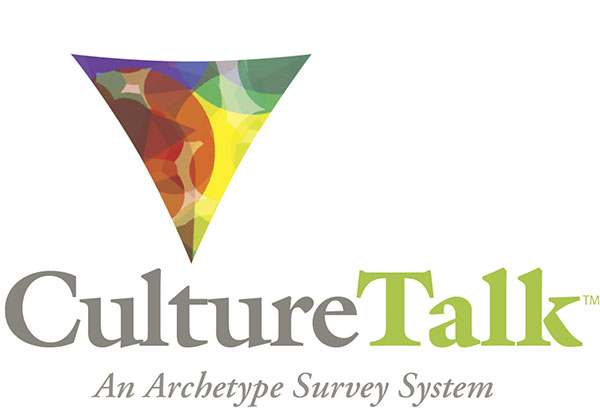Your Guide to Conducting a Baseline Culture Audit
- January 26, 2024
- 5:27 pm
- Theresa Agresta
Does organizational culture feel like a mystery? Three clear steps bring clarity and direction.
Over years of coaching clients and leading culture transformation efforts, we’ve seen that several things are paradoxically true:
Culture is everyone’s responsibility AND Leaders have outsized impact and responsibility for the culture they create in their organizations AND To everyone’s relief, someone is inevitably handed the ‘culture torch’ and expected to make sense of this intangible asset.
Is it you?
Perhaps you’ve been given a new or expanded title. Maybe you’ve even been given a team. Often, your job has grown to include a focus on culture without other priorities being shifted.
Culture can be overwhelming. It may feel like there’s no clear starting line and no end in sight. You may be wondering where to put your toe in the water and how you measure success. You may not relish being the bearer of bad news about what you find, or the cheerleader responsible for getting the team onboard and addressing weaknesses.
Your job is to move culture from the head of the leaders into the hearts of the team. Sometimes, it seems safer not to start.
Why conduct a Baseline Culture Audit?
Whether you inherited a healthy culture, see room for improvement, or are struggling with toxic behaviors — the only place to begin is by measuring what’s actually happening in the culture so you can establish a clear starting point.
Within weeks, you can go from an ambiguous list of culture symptoms or complaints to a clear profile that describes your unique culture. This profile should allow everyone from leaders to frontline employees to share a common framework and language that brings the culture to life and serves to eliminate finger-pointing and blame.
In addition, as the culture lead, you will wield insightful data that shows the underlying drivers and motivators of your culture, including – WHAT type of culture you’re dealing with, WHY behaviors and expectations have evolved to create this environment, and HOW to approach desired change. You should be able to craft a story about your culture that serves as the foundation for many connected efforts and allows you to stitch the data that emerges from other tools into a single, actionable narrative. Your culture will become a lever to move business goals forward.
When to conduct a culture audit
While doing a culture audit can add value to many initiatives, companies are most incentivized to undertake one when there is value tied to its outcome. That could mean overcoming an ongoing struggle with clear impact on the bottom line. For instance, attracting or retaining employees, establishing a definitive hybrid work policy, or bringing groups together post-merger. Or the culture may be seen as an asset that could be put to effective use if better qualified and defined.
If you believe you need to shift or transform the culture of your organization, it’s essential to first understand the profile of your existing culture. This means creating an honest evaluation of the patterns of behaviors that are expected and tolerated in your organization, and whether those culture patterns are helping to move your initiatives forward or hold them back.
The timing of the audit is important — but it doesn’t need to be a long, arduous process. You’ll need a high level of employee participation and dedicated time to share outcomes and engage staff in a plan for moving forward. Choose a window that ensures the effort gets the attention it deserves. But remember, culture is not static and is evolving in response to what happens in your organization every day. There is never a perfect time, so selecting a good month to begin will allow you to get the ball rolling and build momentum. If a toxic culture is driving negative outcomes, getting started is the most important step.
What you will learn
As you endeavor to audit your culture, you should approach the process with a theory of what you may find. You likely have specific concerns about your culture based on what you know about your industry, employment metrics, or engagement scores. You might see opportunities waiting to be tapped. All of these are important inputs.
How you frame the outcomes of an audit will depend on what you’re looking to create or understand. Some common theories might be:
- Leaders’ beliefs about the culture are not aligned with workers’ perceptions.
- Complacent or defensive attitudes and behaviors are holding us back.
- Our reputation as an employer is preventing us from attracting top talent.
- Turnover is high due to outdated employment practices.
- Conflicts between departments are compromising productivity.
- Changes we need to remain competitive will not be understood.
- Succession planning is challenging because we lack of clearly defined leadership expectations.
- Our sluggishness in adopting new technologies is impeding growth.
- Our Gen Z staff have innovative ideas but are afraid to speak up.
You’ll also bring to light things you might take for granted: strengths of the culture you can frame to your advantage.
Ultimately, the most important thing a good audit uncovers is the intelligence hiding in plain sight.
Employees are your greatest source of information. They often care deeply about what’s happening at the organization and have opinions and ideas about how to move things forward. By establishing a process and creating safety for full participation, you will collect feedback that helps you to define, not only what is happening in the culture, but how culture patterns repeat themselves and, thus, what to shift to impact change.
The process itself sends the message that you are listening, you care, and you value the team’s input.
So, how do you begin?
3 Steps for Conducting a Baseline Culture Audit
The first two steps in the audit are part of the research phase and can be undertaken concurrently, which serves to keep the process moving along.
[Step 1:] Assess
There are a number of different tools companies deploy when assessing culture to provide quantitative input. Depending on the framework the survey uses, it measures different cultural signals. Some measure values –both at the organizational and leadership levels. Others measure engagement, with a focus on how motivated and engaged your employees are to perform their best at work each day.
Some measure a moment in time – such as pulse surveys that evaluate employee sentiment about key indicators at a regular cadence. These might include elements such as innovation, leadership, belonging, career growth, and communication.
Other surveys, such as CultureTalk for Organizations, measure culture patterns. The goal of this assessment is to identify the underlying patterns that drive motivation and behavior. CultureTalk uses a framework of 12 Archetype stories to help align an organization’s culture with its strategic goals.
Who to survey
A culture survey should be sent to a representative sample of your organization. To get a valid result, you’ll need to receive responses from a statistically significant number of people. Keep in mind, that you may be looking for several sets of data and may need to consider your overall response rate, as well as the number of responses you receive across different demographic breakouts.
For instance, if you’re conducting the audit after a merger, you’ll want enough responses to ensure a reliable sample size from both the original companies in addition to the newly merged company.
One thing that differentiates a culture survey from other types of employee surveys is that, when you limit or randomize the invitation to participate, you send a mixed message to staff. On one hand, you’re looking for input. That’s good! On the other, the perception that not everyone can add their feedback on the culture may contribute to resistance to the process or outcomes. Opening the survey to everyone is often the best choice.
[Step 2] Discovery & Stakeholder Interviews
As your culture survey is open and responses are coming in, you can begin conducting the second part of the audit, the qualitative input. Stakeholder interviews provide personalized accounts, adding nuance and perspective to the questions you came in with and the results uncovered by the survey.
Interviewees are often willing to be candid with their perceptions and experiences, especially when a promise of anonymity is respected.
The outcomes of interviews are also used to validate the survey results. You should be able to align the patterns uncovered in the verbal feedback with the metrics measured in the survey.
In this step, you’ll also collect additional data to help build the culture narrative and tie it to the theories you have going into the audit. For instance, if you believe succession planning is a challenge in your culture, you’ll want information on recruiting, career progression, and leadership development.
Origin stories, key milestones, and the legacy of leaders add flavor to the discovery. The industry you are in, crises the company has overcome, and major disruptions it’s facing are critical data points that impact culture and should be included. Findings from other assessments can be wrapped in too.
[Step 3]: Focus Group Workshop(s)
One or more focus groups will become the vehicle to share initial research findings. There are two ways to approach this: 1) start with the leadership team; 2) start with a cross-functional group that includes representatives from various demographics.
This is where the magic happens. These sessions should be collaborative in nature and serve as another opportunity to validate results. As metrics measured in the survey are shared and aligned with the data collected through discovery and interviews, patterns begin to emerge. Frequently, participants will chime in with their own stories as the conversation gets going.
The goal at the end of the workshop is to have a defined story of your unique culture and be able to articulate how it is moving you forward and/or holding you back. An approach that enables you to name and talk about the culture that exists today also allows you to identify and discuss what your aspirational culture looks like. The beauty of these workshops is that they create a strong, collective sense of ownership of the patterns of behaviors identified and the desired shifts.
Ultimately, focus should not rest on culture ‘scores’, but on the patterns they represent and the ability to create an action plan to move toward your goals. Done well, a focus group should both create a sense of closure around the survey itself and feel like an exciting start, leaving the participants with a clear set of next steps.
Need support with a Baseline Culture Audit?
Curious about bringing the CultureTalk team or platform in to conduct your Baseline Culture Audit?
Schedule a call to discuss your specific goals.






